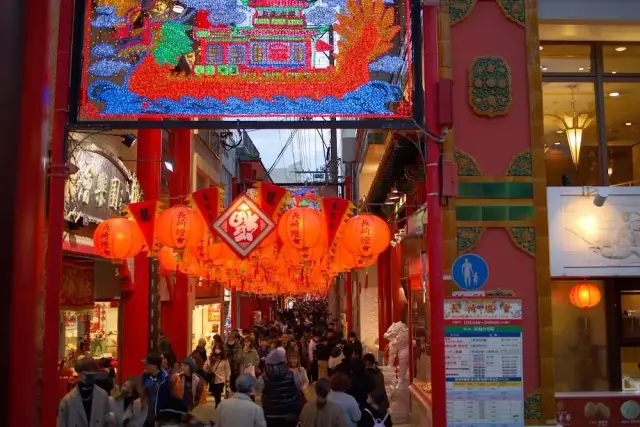https://www.dekitabi.com/itinerary/nagasaki-international-district-tour
Oura Cathedral: A Testament to Faith and Resilience

https://www.dekitabi.com/attraction/oura-cathedral-nagasaki
Nagasaki’s Oura Cathedral, officially known as the Basilica of the Twenty-Six Holy Martyrs of Japan, stands as a profound symbol of the city’s Christian heritage. Built in 1864, it is the oldest surviving church in Japan, constructed by French missionaries to serve the local Christian community, which had been persecuted for centuries. This UNESCO World Heritage Site is renowned for its stunning Gothic architecture, complete with intricate stained glass windows that filter the sunlight into a kaleidoscope of colors. The cathedral’s interior, adorned with delicate wooden carvings, invites contemplation and reflection. Visitors can also explore the adjacent museum, which provides a poignant glimpse into the history of Christianity in Japan. Oura Cathedral is not just a place of worship but a monument to the enduring spirit of faith.
Glover Garden: A Stroll Through History

https://www.dekitabi.com/attraction/glover-garden
Perched on a scenic hillside, Glover Garden offers breathtaking views of Nagasaki Harbor and a unique journey through the city’s international past. This open-air museum comprises several Western-style residences, including the Glover House, the oldest surviving Western-style house in Japan. Built for the Scottish merchant Thomas Blake Glover in the 19th century, the house is a blend of British and Japanese architectural elements. As you wander through the garden, you’ll encounter beautifully preserved buildings, lush landscapes, and statues commemorating key historical figures. The garden is especially known for its seasonal flowers, including vibrant azaleas and camellias. A visit to Glover Garden provides insight into the lives of the foreign merchants who contributed to Nagasaki’s development as a vibrant international port.
Former Hong Kong and Shanghai Bank Nagasaki Branch: Architectural Elegance

https://www.dekitabi.com/attraction/shanghai-bank-nagasaki-branch-museum
The Former Hong Kong and Shanghai Bank Nagasaki Branch is a splendid example of early 20th-century Western architecture in Japan. Completed in 1904, this grand building features a fusion of Western and Eastern design elements, showcasing the cosmopolitan nature of Nagasaki at the time. The building’s elegant façade, adorned with Ionic columns and detailed cornices, reflects the architectural trends of the Meiji era. Inside, visitors can explore exhibits that highlight the history of banking and commerce in Nagasaki, including original banking equipment and historical documents. The building stands as a testament to the city’s role as a commercial hub and its connections with the broader Asian and Western worlds.
Nagasaki Confucius Shrine and Museum of Chinese History: A Cultural Gem

https://www.dekitabi.com/attraction/nagasaki-koshibyo-confucius-museum
The Nagasaki Confucius Shrine, built in 1893 by Chinese residents of Nagasaki, is a striking embodiment of Chinese culture and heritage in Japan. It is one of the few Confucian shrines built outside of China, and its vibrant colors and ornate decorations are a visual feast. The shrine complex includes a museum that offers a comprehensive look at Chinese history and the long-standing relationship between China and Japan. Exhibits feature ancient Chinese artifacts, traditional clothing, and detailed dioramas depicting significant historical events. The serene atmosphere of the shrine, coupled with the rich educational experience provided by the museum, makes it a must-visit for those interested in the cultural interplay between these two great nations.
Dutch Slope: Echoes of the Past

https://www.dekitabi.com/attraction/dutch-slope-nagasaki
Nestled in the hills of Nagasaki, the Dutch Slope is a charming area that once housed the residences of Dutch merchants during the Edo period. The narrow, stone-paved streets, lined with traditional Western-style houses, offer a nostalgic glimpse into Nagasaki’s international history. Many of the buildings have been preserved or restored, providing a unique architectural perspective on the fusion of Dutch and Japanese styles. The area is perfect for a leisurely stroll, allowing visitors to soak in the historical ambiance and imagine the lives of the foreign residents who once walked these streets. Informational plaques along the way offer insights into the significance of each building and the history of the Dutch presence in Nagasaki.
Nagasaki Shinchi Chinatown: A Culinary Adventure

https://www.dekitabi.com/attraction/shinchi-chinatown-nagasaki
Nagasaki Shinchi Chinatown is one of the oldest Chinatowns in Japan and a vibrant testament to the city’s multicultural heritage. Established during the Edo period, this bustling district is a hub of activity, especially during the Chinese New Year and Nagasaki Lantern Festival. The narrow streets are lined with traditional Chinese gates, bright red lanterns, and a plethora of shops and restaurants offering delectable Chinese cuisine. From savory dishes like Champon and Sara Udon to sweet treats such as steamed buns filled with red bean paste, the culinary delights are endless. In addition to food, the area offers a variety of Chinese goods, souvenirs, and traditional crafts. A visit to Nagasaki Shinchi Chinatown is not only a feast for the taste buds but also a rich cultural experience.
Conclusion
Nagasaki is a city where diverse cultures have intertwined over centuries, creating a unique and rich tapestry of history and heritage. From the spiritual serenity of Oura Cathedral to the historical elegance of Glover Garden and the bustling vibrancy of Nagasaki Shinchi Chinatown, each site offers a glimpse into the city’s multifaceted past. Exploring these landmarks provides a deeper understanding of Nagasaki’s role as a cultural and commercial bridge between Japan and the rest of the world. Whether you are a history buff, a culinary enthusiast, or a casual traveler, Nagasaki’s historical and cultural sites promise a memorable journey through time and tradition.


Leave a Reply